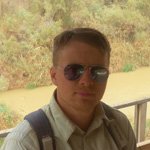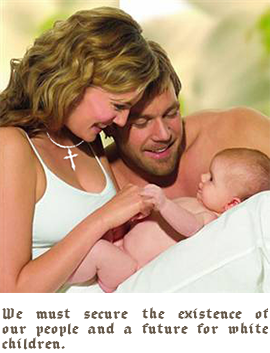2006/07 East and South Asia
Expedition to East and South Asia
This time I went on the longest journey of my life, which took me 6 months. I planned to travel for only 4.5 months, but it soon turned out that I clearly didn’t foresee the state of the Indian roads and the reality of the Indian food poisoning, which slowed down my journey. I started my expedition around East Asia from South Korea, and then I went to China through the Yellow Sea. I also went to Hong Kong and Macao, and to Tibet, which turned out to be an amazing adventure on the roof of the world. My route through South Asia led through Nepal, India, Pakistan and Bangladesh. Regardless of the country and the people, my trip opened my eyes to occupation, misery and tragic realities of the Third World. Of course, it was interesting and educational, but especially this journey taught me a lot.
Introduction to the expedition to East Asia
This time I went on the greatest adventure of my life which was going to last for about 4.5 months, but as it turned out later I was travelling for half a year. In comparison with the last trip this time I was prepared better and I had a specific plan for my expedition, although I admit that my camera could have been better. I was going to see a huge part of Asia because my objective was to travel a large section of East Asia and South Asia (the Indian Subcontinent).
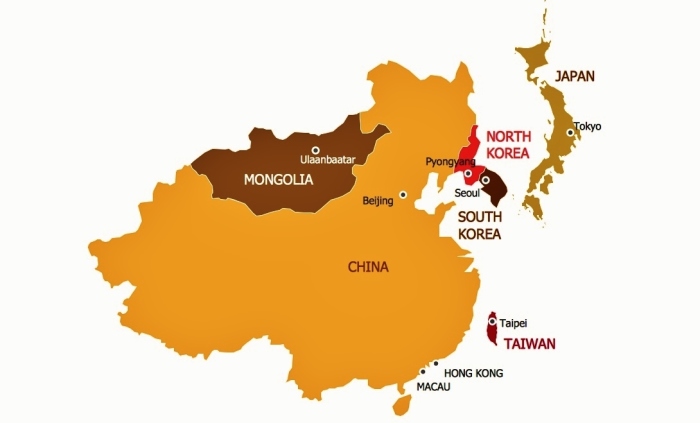
The map of East Asia.
Introduction to the expedition to South Asia
Soon after I got to Nepal, my first country in the Indian Subcontinent. My base was in Kathmandu where I saw a lot of interesting temples and the old town and where I organized many trips to further destinations. I liked the Monkey Temple and the Chitwan National Park although Himalayas themselves were also a great adventure, the same as driving on mountain slopes aboard bus wrecks. From Nepal I went to India, to the huge and tragically poor but also a very interesting country. Sometimes poverty intertwined with nonsense but surely that was the charm of India. I managed to travel around India, from Varanasi to Rajasthan and from Delhi to Calcutta. I was in Bangalore, Tamil Nadu and in the states of Goa and Kerala. Each state was very interesting, almost like a different country and in comparison to Poland, I felt that travelling India was like travelling in time. I was also sick a couple of times but in India it is to be expected. I also visited two neighbouring countries from India. When I was in Amristsar where I saw the Sikh’s Golden Temple I went to Pakistan where I moved from Lahore through Islamabad and then to Peshawar. The most interesting experience however was my trip to the border with Afghanistan, through areas populated by Pashtuns and Afghan Refugee Camps. Despite my fears Pakistan was safe and also very interesting. Then I came back to India, I got on a train to the east of the country and from Calcutta I went to Bangladesh. I admit that it was also a very interesting country, especially the capital city of Dhaka, also called “the city of million rickshaws”. Then I made a trip to Srimangal where I saw rural life and where between lemon trees I played badminton with locals. Bangladesh was a detachment from reality because chaos over there is an everyday routine.
All the countries that I visited during my trip were very interesting and opened my eyes to many problems facing the world. I began to realize how very lucky I was that I was born in Poland. Anyway, my journey was beautiful and very educational. I would recommend it to anyone.
Stop over in the United Arab Emirates
On the way to the Far East I thought that it would be nice to stay in the Arab country for a few days and see Dubai. It was not supposed to be an expedition around the Emirates but the desire to see something new. The first thing that really hit me when I landed in the Emirates was the heat that I had never experienced before. It was a dry heat that accompanied me all the time and it was hard to breathe, even though it was already mid-August. As it later turned out even the water in the sea was far too warm for me so the best time for a stroll is in the evening. The second thing that it was impossible to miss was the exotic nature surrounding me. Everywhere I look there were high, massive palms which shadows were a real blessing.
I went to the Creek harbour in the old Dubai where a boat owner persuaded me to get to the other side of the shore on his stinking with oil boat. It was very hot and the atmosphere gave me a really hard time. The cruise was very educational as I could see the buildings of the Old Dubai on quite a long-distance and on the way I enjoyed a company of an unshaven and sweaty passenger. It was a real luxury and there were only three of us on the boat. Not far from us there was another boat passing by and even though it stank the same it was full to the limits. Water taxis over there take to work cheap labor from Pakistan, Bangladesh, India, Iran, Yemen and many other countries. At the sight of the White man, despite the murderous heat everyone shouted “hello” so I shouted back too. Once ashore I walked into the air-conditioned store and only then I continued my walk. I also noticed (though I could be wrong) that carriers did not take money from women.
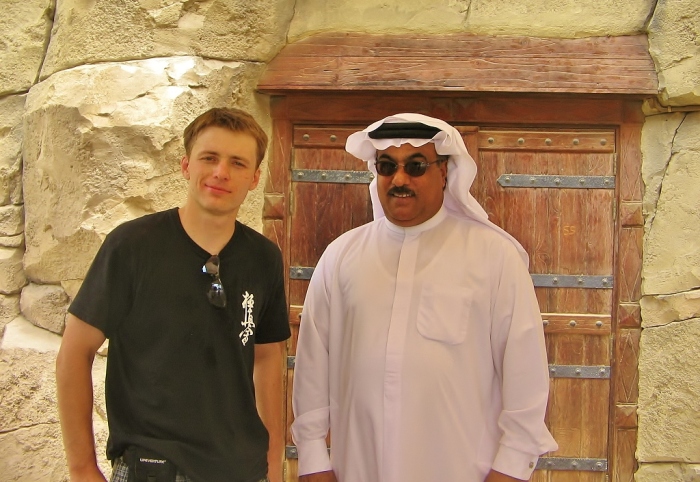
Dubai – a photo with an Arab.
The new (rich) and the old (poor) parts of Dubai are located far apart, perhaps so tourists could only see what they could pay for the most and where they would feel safe. The old part is also safe but it certainly works on imagination after dark. To me the rich part was nice but without the feeling of adventure. In the old (poor) part of the city I sat in one of the dirty Arab cafes where men tired after work ate kebabs. I drank milk straight from the coconut and then I prepared kebab for someone else. They played loud Arabic music and the atmosphere of that place, where a horde of dirty Arabs was biting meat – was unique. I felt great over there, very different than in the tourist district. I already had a lot of experience in those kind of places although I got through much worse. That day I felt that the sun finished me off and I had to do something with myself at night. I went by bus to the beach, I threw a towel on sand I quickly fell asleep. I was lucky because that night I didn’t come across any police patrols.
New Dubai is a playground for the rich. When I woke up in the morning with a view of the “windsurfing” hotel first I took a dip in the warm Persian Gulf. I was also in a place where they had a ski slope and I saw a few other monuments of money for wealthy tourists. People over there were different too. Arabs in white pijamas did not always looked at me in a pleasant manner and a few of them took me for an American. They didn’t even want to talk to me; firstly I had an empty wallet and secondly I was the “enemy from the West.” Taking a photo with one of them was also not easy. Yes, I preferred Old Dubai although in New Dubai I liked the rich Arab women who followed their husbands and blinked their eyes to me in secret. In New Dubai – the one from postcards for tourists, for the first time I saw that Islam is a great business and propaganda machine to rule the poor. Alcohol, prostitution and drugs are in Dubai on the streets, at rich people’s fingertips. The rich drive such cars that Germans or the Japanese have not even dreamt of and the rich read Playboy but poor people get around by crowded buses and they read Koran. Dubai is a city of enormous contrasts. Rich Arabs still looked at me with more respect because despite my dirty T-shirt and a Christian cross around my neck I was a White man, but poor Muslims they treat like animals. The petrol rich Arabs could buy a star from the sky.
My stay in Dubai was very short but I have good memories from there. I spent a free night on the beach where I had a nice view and if it was a little colder I would have stayed longer. I recommend Dubai but only in winter.
South Korea

Seoul – details on one of the temples.
Whilst traveling around Korea I felt sometimes like in the film “Lost in translation” because the ability of understanding English is terrible and sporadic. Koreans were still nice to me because they tried to explain to me how to get to places but at the end I had to work it out by myself. Quite often I had to compare Korean letters to English names in my guide book so I could get where I wanted. I think however that whilst traveling around foreign countries we should know a few local words to not to rely only on the language of gestures. We can always help ourselves with body language when we want to eat or go to the airport but we definitely do not want to use gestures when we ask for a toilet. A few words are always useful in any language.Upon arrival in Seoul I was quite impressed with Korean women. Most of them were slim and of medium height, wearing short skirts or trousers to their knees and compulsorily on high heels. Unfortunately their English was very bad what make any contact difficult but it was still nice to watch. In the beginning however I want to warn White men to not to invite Korean women for a dinner because in many cases it is a scam. The thing is that English lessons cost a lot of money and that’s why Korean women are very happy to go out with White men, they want to be invited for a meal and give a little hug but purely to have a free English lesson and a free meal. One Australian man told me that he was going out with a lot of Korean women and he lost a lot of money, just to give them free English lessons and wasting money on them. When I was in Korea one hour of English cost 40,000 Won but on the other hand one hour of Korean cost only 2,000 Won – so it’s not a surprise. (This same scam also exists in China). For that reason when Korean women approached me to have a conversation I told them that I could spend an hour with them for 20,000 Korean Won which was still 2 times cheaper than normal. In the end I spent a day with a Canadian woman, with full understanding and without any intention of using one another. In addition, Korean women do not feel well about their appearance in terms of their own race. Just on my street, near Hyeywa underground station there were a lot of plastic surgery clinics that specialized in reworking women’s eyes, so they could look European and so slitty. Thanks to plastic surgeries, very often nasty Korean women can look quite approachable. In addition, they have a whole range of whitening creams which do not work at all, and once again they have high heels and short skirts. One Korean woman also lost her mind because she took a dog in boots for a walk.
Korean food is good and cheap and I enjoyed it, even though it was very specific. Every meal always includes a starter and it is usually a chopped yellow vegetable that to some point kills some taste of a hot soup. There is also kim chi which is a chopped cabbage with Korean chilli. Korean cuisine is very hot but fortunately not as hot as in Thailand. As we can easily figure out based on the geography of the country seafood is also very popular in Korea. At street stalls they sell live mussels and octopuses which can be taken out from the aquarium by customers and then eaten. They prepare them on site for customers. I also had su shi and Korean dumplings wrapped in rice bread; and then of course the yellow fruit with kim chi. Everything I ordered I ate with chopsticks and learned how to use them better. When I ordered food I often had no idea what I ate but I advise travelers to treat it as a part of their Korean adventure. I simply pointed my finger and said: “I’ll have that yellow please”, even though no one understood me anyway. When walking through the streets of Seoul and watching Koreans at work in their shops and their street stalls sometimes I had su shi and sometimes a dried squid. I ate a lot of them in Thailand and Macao although you can never have enough squid. After a few days in Seoul I began to notice differences in Korean foods and wanted to eat those which were more sophisticated. I had mostly octopus but I also ate mang du dumplings and the famous cabbage with chillli called kim chi. Then I realized that I actually had a brand a new version of that starter because the cabbage was green and the dumplings had many different fillings. In that moment it came to my mind that when it comes to mang du and kim chi they have a whole package in Korea. I also cannot forget the sticky rice wrapped in a piece of marine algae with dried fish and vegetable stuffing called kim bab. Kim bab is a healthy Korean fast food that children eat on their way to school. Once I also invited myself for a dinner where I had to sit on the floor at the table of a height of about 30cm and even though I only ordered one dish the gave me a lot of starters. The food was good but at the same time it was good to train using chop sticks and keeping my backbone straight. I think that even if someone is not interested in Korea it is worth to go there just for the food.
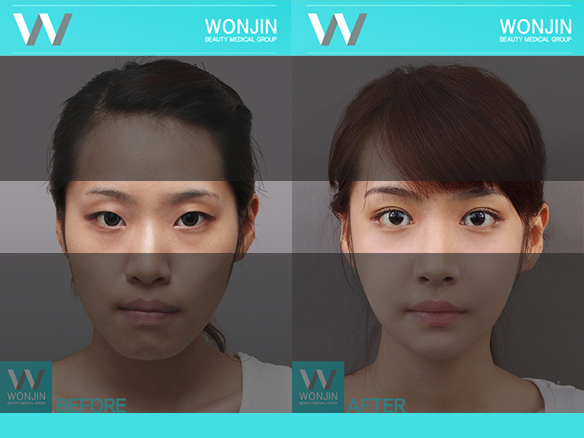 |
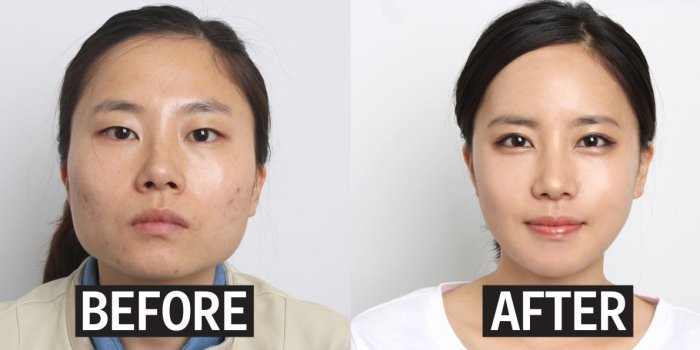 |
The beauty of Korean women is not natural but acquired – and on a mass scale. South Korea is the world’s capital of plastic surgery.
South Korea is also very rich in ancient architecture and it has many beautiful and very impressive temples, based on oriental art and philosophy of Confucianism. For those that should be seen in Seoul I include Changdeokgung Palace and Biwon. This palace is on the UNESCO list and it is a world cultural heritage. Biwon on the other hand is a beautiful garden in which the temples are built in. The construction of that architectural beauty begun in 1405 by the order of King Taejonga and was completed in 1412. For years they were only beautiful temples and buildings used the residence of the king but in 1463 King Sejo expanded the palace and created Biwon gardens, also called “the secret garden”. Unfortunately that unique place is also linked to the tragic history between Korea and Japan. The Japanese burned all the buildings in the palace in 1592 and many of those buildings were burned and rebuilt many times. In total the palace served as home to thirteen kings for over 270 years. Very impressive is also the main gate called Tonhwamun, which was built in 1412 but then destroyed in 1592 during the Japanese invasion. Then it was rebuilt in 1607 and today it is the oldest wooden gate in Seoul. Changdeokgung Palace is also the only place where you can still see the blue tiles, which were often used in Korea. I found the roofs to be very special because they looked as if they were made up of many stories and they were beautifully decorated. I have to admit that Korean temples did impress me and they were very different from those which I saw in Laos and Thailand and have nothing in common with those in Myanmar and Cambodia. Korean temples are definitely massive at the base of the roof. The beauty of the whole place is additionally enriched by the Biwon garden which without all the buildings wouldn’t look so impressive. The garden (original name: Huwon) consists of a number of ponds, stone bridges, trees shaped as bonsai and rocky hills on which stand small pavilions and pagodas. Biwon is a beautifully landscaped garden where once kings and their families spent their time on relaxation.Another place that I recommend is the Confucian Jongmyo temple built by the Joseon Dynasty. It is used as a place of worship for dead kings and queens of that particular dynasty. The whole complex was built in 1395 but during the Japanese invasion in 1592 it was burned down and then rebuilt in 1608.
In Seoul I also recommend the Hwanghak-dong flea market. This is a street of stalls with antiques, second-hand machines of different types and mostly the things that nobody needs anymore and Koreans want to get rid of. It is one of those places where one can find the most original souvenir from Korea, without any idea what they buy. I recommend this place to the curious ones. I was also at the Yangnyoungshi natural medicine market. The bazaar was large and interesting and it accounts for 70% of the total natural medicine market in Korea, including Korean ginseng. However, especially there I would advise to take an interpreter so he could accurately explain the purpose of each medicine.

Seoul – at the background of old architecture.
I left Korea by ferry from Incheon, through the Yellow Sea to China. The taxi driver barely understood me that I wanted to go to the port but he understood the word “China” and began to spit with hatred for that country. Fate wanted that there were just a couple last tickets to China and only Qingdao – and that’s why I sailed there.
China (first contact, first impression)

With a Chinese girl who helped me in communication and in fighting the crowd at the train station.
At the train station everyone spoke only Chinese but sometimes students come there to help tourists and to practice their English. They don’t understand a lot and it is difficult to understand them but I didn’t have any other choice. Qingdao is quite a nice seaside town. People swam in the sea and some of them even wanted to take a photo with me. I quickly realized that I was more exotic to them than they were to me. They were all very nice to me but despite their best intentions still unhelpful. In Qingdao in 2008 was held the sailing part of the Olympics. Among many things in Qingdao I saw a street market, hair brushes made of cow horns, necklaces and figurines made of shells and various types of fish crackers. Besides, in Qingdao I ate a whole plate of octopus with spicy bamboo, I walked along the coast and watched Chinese people …… or rather the Chinese were watching me. I noticed that in China there was even a greater selection of seafood than in Korea, especially those which were impaled. It is unbelievable that Chinese people impale everything what can be killed. They eat dried shrimps, octopuses and even seahorses like potato chips from a bag.
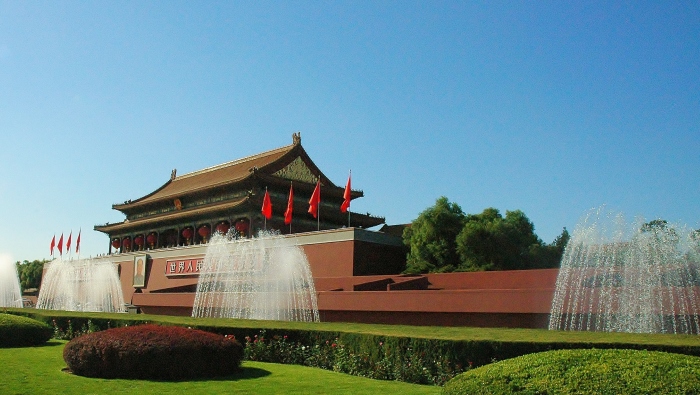
Beijing – the Forbidden City gate.
The next morning I got up at 5 am to go to the airport but my flight was delayed 10h and that’s why Air China paid for my room and full board in a 4* hotel. Who didn’t I meet over there? An Iranian who hated Iran, an American who spoke Chinese and hated America, Chinese women taking photos with me and very rude staff who came to work just to waste time. I felt a bit like a white ape which they fed, they took a picture of me and if something was wrong they completely ignored me. We eventually got to the airport by a shuttle bus but an immigration officer pulled a part of my ticket out when checking my passport and only left the proof of payment which was not enough to fly. The help desk people at the airport did everything what was in their power to be extremely unhelpful and that’s why I had to buy a new ticket and at last I left China. At the time it was no longer even important to me that I flew to Mongolia but that I finally left China. I was unlucky but either way I had to return to China because in 2,5 weeks I had to meet my travel companion in Beijing. My short time was my main enemy and rush creates disasters.
Mongolia
Mongolia lies in East Asia and it is “squeezed” between Russia and China. Some data indicate that Mongolia is in Central Asia but I don’t agree with it. I divide Mongolia into Inner and Outer Mongolia. The Outer Mongolia is outlined in the country’s borders and the Inner Mongolia is a part of northern China. Mongolia is five times larger than Poland and the population is just over 2.5 million, what means that there is approximately 1,5 km2 of land per every person. For comparison, in England they is only 3-4m2 per person.
Despite the extremely inhospitable and difficult living conditions offered by Mongolia and the horror stories about all the dangers waiting for me tourism improves year by year. To me personally the greatest asset of Mongolia is the absolute silence on its “endless plains”. Simple and quiet life, observation of nature, bactrians and goats grazing at the background of sand dunes guarantee an unforgettable experience. Mongolia is full of beautiful national parks and animals living in them although I advice to not expect any comfort. I would therefore recommend Mongolia only to those who enjoy an extremely close contact with nature and to those who easily adapt to local conditions. In the north of the country there are vast lakes, reindeers and excellent fishing conditions and in the south there is vast Gobi desert which offers unforgettable attractions. In addition to sleeping on the empty and flat as a pancake steppe one can ride horses and camels, can climb sand dunes and have plenty of time for lone thinking. Usually people travel in groups what means that each participant is able to get to know their own and other people’s weaknesses. When I came back to Ulan Bataar after 11 days in the Gobi Desert I had to recover for a few days but it was worth it. Unfortunately Mongolia is still a very unpopular country, despite the fact that it offers mutton dumplings, mare’s fermented milk and sleeping in tents in total wilderness, in strong winds and – 25oC. I’m sure that roads would be also good if they existed, that’s why I had to go through the naked steppe on a beaten track and sometimes I even had to throw big stones in to the river so our 40 year old Soviet car could go through. All of that is of course accompanied by beautiful views, absolute quiet, grazing animals, sand dunes and a beautiful canyon. It’s hard to believe that someone would prefer to go to the Greek islands instead.

The Gobi desert in Mongolia – Khongorun Els sand dunes.

In a bar with Mongolians.
In Ulan Bator I went to see Gandan Buddhist monastery built in 1840. It is the best known and largest temple in Ulan Bator which today is an important part of the Mongolian culture. Gandan Temple is also one of the few temples that survived the communist era, when Bolsheviks destroyed all cultural heritage of Mongolia. From what I managed to find out the temple survived because it was closed and used as stables for horses for Russian soldiers. On a side note, Mongolia is the most important center of Tibetan Buddhism in the world after Tibet. Then I got to the Sukhbaatar square and its monument of Sukhbaatar on the horse with a raised hand. Sukhbaatar was the leader of the Mongolian revolution and a national hero and his image can be also seen on some banknotes. The truth however is not as glorious because Sukhbaatar was a Mongolian communist in the Russian army and one of the main organizers of the Mongolian People’s Army. He also signed a treaty of friendship with Russia what meant the total subordination of Mongolia to Soviet authorities. In the square there are also the building of the Mongolian parliament with the statue of Genghis Khan, the national theater and the opera and the drama theater. From what I was able to find out Mongolians hate the Chinese the most and about Russians they say something good from time to time because the Chinese only destroyed their country and the Russians also introduced their culture and art. The best examples of it are ballet and theater. It was very cold on that day and the wind was strong, that’s why I didn’t stay there long. It was only September but the Mongolian winter was looking harsh already.I also went to the National Museum and the Museum of Natural History. It was interesting that Mongolia was once a home to many species of dinosaurs which skeletons are on display there. There was even one huge which didn’t look smaller than Tyranosaurus Rex! Among many other exhibitions iI recommend to take a look at the great vulture with a wingspan of over 2 metres (this would explain animal skeletons in the Gobi desert described by other travellers). However, the greatest part was devoted to the founder of Mongolia, Genghis Khan. A few detailed maps showed the area covering hundreds of years and the way Mongolia changed its territory, from its heyday between XIII and XIV century, until the modern times. A large part of the museum covered an exhibition showing the lives of nomadic Mongols and their treks in search of better pastures. I advise to pay attention to the Buddha statue and a painted portrait of Genghis Khan on the Zaisan hill.

The Gobi desert – Mongolian family at the background of Khongorun Els sand dunes.
The landscapes were changing rapidly. Once there were only steppes where apart from the flat horizon there was nothing and other times there were mountains, sand dunes, rocks scattered around (also on the road) and streams through which we had to go through. Regardless of the landscape we were always accompanied by great majestic eagles that seemed as if hanged in the air, and when we didn’t see them we just saw their great shadows reflected on the road. There were also countless herds of goats, yaks and bactrians (two humped camels). I also saw skeletons of hoofed animals or just skulls and scattered bones and once also a decaying cow with half exposed skeleton. My adventure at one of the most remote corners of the world was getting more interesting.
We always stayed with nomad Mongolian families in their yurts. Yurts are the traditional, big Mongolian tents with wooden skeletons and covered with a triple, thick layer of fabric and leather which make it windproof and waterproof. The model of Mongolian yurt has been unchanged for hundreds of years and it is also easy to fold and carry. Also to explain in more detail, nomads are desert people who have chosen a life away from civilization. In the middle of a yurt there is usually a fireplace for burning wood, beds are against the wall but sometimes just a mat. Nomads live off breeding camels and goats and now they also profit from tourism by allowing visitors to sleep in their yurts for a small fee. I noticed however, that sometimes next to the yurts Mongolian nomads have inventions of the twentieth century. It is a satellite antenna or a solar battery or a windmill to harness the power of the sun and wind for production of energy. I couldn’t count on a warm shower and toilets or rather pits behind the screen were outside, and they were always breeding grounds for flies. The food was also very modest. Unfortunately in late August it was very cold because the temperature of the Gobi ranges from +40 to -40 degrees at night and was up to me whether to freeze or not to freeze. Sometimes the temperature outside and inside the yurt was -10, that’s why I had to get up at night, put the flashlight on my head, chop firewood and throw into the fireplace. Nobody wanted to stay with a last match and starting the fire was always a great joy. Mornings were usually warmer but with strong and cold winds and that’s why nobody was able to immediately adapt to it. When I got up in the morning it took me some time to recover.
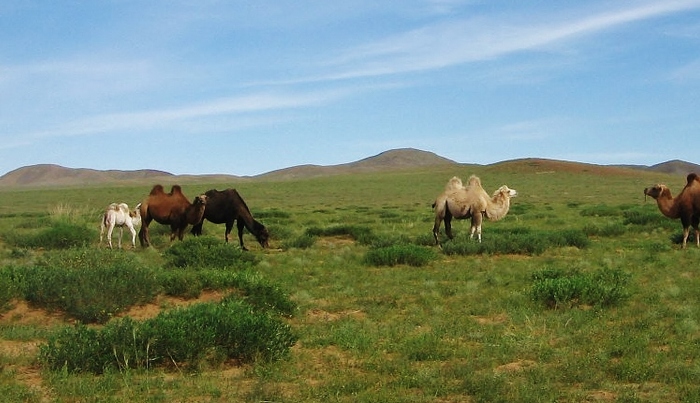
Mongolia – bactrians on the Gobi desert.
It is also worth to mention a few places that I saw during my adventure. We went to the “burning” Cliffs of Bajandzag which are sandstone formations rich in dinosaur fossils. In 1922 were found first dinosaur eggs and bones from 60m years ago. On the board of our Soviet cars we passed the Gobi Altai, a mountain range in the southern Mongolia known for about 800 glaciers and 3000 lakes. The entire Altai stretches 2000 km through the Asian part of Russia and Kazakhstan, Mongolia and China. The Altai in Gobi is located in the middle and there are high mountains. The highest peak is Chujten (4356m n.p.m). To me, some parts of the mountains looked quite dramatically, with its gorges and valleys. (The area is seismically active). The next day we arrived at the Yolun Am national park which showed me that the Gobi desert is very different from the traditional perception of a desert. It was the Vultures Gorge which is a beautiful area with many mountain streams and a great gorge where I climbed the rocks. The Yolyn Am park is mostly known for its big deposits of ice that remain there even in the summer. The Gobi Desert was also much colder and wetter than I previously thought. Mongols keep herds of goats, sheep and bactrians there and there are many species of wild animals. In addition to the beautiful birds of prey those areas are also inhabited by the world’s only desert bear. I also came along such surprises as animal skeletons and corpses of decaying cows.
After several days of hard driving through holes and pits as well as digging out sand from the hair and nose we got to Dalandzadgad. It was a small, obscure and dusty town in southern Mongolia, near the border with China. Our driver dropped us in a disgusting, dirty yard where there were two yurts and a house covered with a metal sheet. The gate consisted probably of accidentally found boards, in some places also covered with a metal sheet. When we got inside it turned out that there were only four beds available. a grandma was lying in the entrance on the floor and looked as if she was breathing her last and the driver said that we could also sleep on the floor – near the grandma. For that reason we went to the only hotel in town where we were promised such luxuries as hot shower and a meal, but we asked for too much. First I felt an icy stream on my back and then I hugged the floor because there were only enough beds for our women. Luckily we went to a decent restaurant where we were finally able to eat a hot soup.
One of the most memorable places was the Khongorun Els sand dunes. I remember that on that day we had to leave at 9 am so I got up at 6 to walk on the dunes. It was beautiful because the sun was just rising and I couldn’t sleep from the cold anyway. Apparently the Sahara dunes are up to more than 400m above the sea level while those on the Gobi reached 200m. The whole region was particularly interesting because apart from the sand dunes and the steppe there were scattered rocks, streams and low vegetation. After enjoying the dunes we drove a few hours on difficult, Mongolian roads and arrived to Arvayheer. Whilst there we spent the night in yurts surrounded by a simple fence. This time however we slept on beds and in the middle there was a stove where we threw wood. For the first time in Mongolia I also saw a tree. In Arvayheer I took that great opportunity and our driver drove us to the only public bath within a radius of several hundred kilometers. It was a primitive brick farm with showers and finally with hot water. I don’t want to sound like a man of a shallow nature but it was one of the most enjoyable experiences of my trip. That night was particularly cold but by regularly throwing firewood to the fireplace we managed to survive.

Mongolia – a decaying cow in Vulture’s Gorge.
Since Dalandzadgad we were still heading north. Along the way we passed rocks from the Bronze Age which are a kind of a cemetery of ancient warriors. There was also a massive vertical rock with carved deers. I remember it well because that’s where our Soviet car broke down and I had to take the time to look around. When our driver came out from under the car we drove a little further and the night we spent in a picturesque yurt camp. There were no nasty farms there but an open grassy area with scattered boulders and mountains on the horizon. Several people from the group went to ride on horseback but I was close to yurts to exercise. Not far from the camp there was a real phenomenon, especially considering that we were in the desert. It was a canyon with a depth of 30m and a length and a width of about 100m with a river flowing through. Inside it there was a waterfall with a height of about 15m with a natural pool, trees and a beaten path. On the same evening we reached Karakorum, the ancient capital of Mongolia founded by Kublai Khan – the grandson of Genghis Khan. The main attraction is the Erdene Zuu monastery built in the Tibetan style and it is the only object worth seeing in the Karakorum. Then, going for the first time on an asphalt road we went to Ulan Bator.
After returning to Ulan Bator I organized a trip to the Terelj national park. Terelj National Park is one of the most visited regions of Mongolia because of its unique flora and fauna. Valley in which I lived was surrounded by mountains, in a way that it looked as if someone had put bigger rocks on the smaller ones. In addition to the magnificent rock formations and traditional yurts integrated into the surroundings guests can also ride on horseback and observe yaks and camels. When I arrived it was very cold and it was snowing but fortunately I had the company of five women who took care of the only man in our group. We were also invited to a traditional yurt by a Mongolian family. They gave us some home made cheese, bread and fermented mare milk (a local delicacy). They were poor people who lived in their yurt throughout their lives and they mainly ate what they produced by themselves. We left them some money because we saw that they needed at least a small amount.

Mongolia – my adventure in the Gobi desert.
Then I went back to Ulan Bator and from there I took a train to the Chinese border in Zamyn-Uud, where I spent a few hours on the bus watching the driver hitting on each other’s bumpers and cursing each other. However, the atmosphere on the bus was relaxed because people were cheerful and they passed around jars with hot dumplings. The border in Zamyn-Uud was very adventurous and as soon as I was in China I was invaded by the sellers of everything but especially bus tickets to Beijing. Finally, I highly recommend Mongolia though it is definitely not a country for people demanding luxury. In Mongolia one must fight harsh realities on its vast steppes because that’s what the Mongolian tourism is about. I also recommend getting to know many interesting traditions to which Mongols are very attached to. When I look at Mongolia through the prospect of adventure it was one of my best countries.
China (the first trip)
This is where I began my trip around China because before that I was just passing through. My first entry point was the town of Erljan, full of banks, exchange offices, shops and spitting people. The economic difference between China and Mongolia was very visible because Zamyn-Üüd was empty and poor. In Erljan I was harassed by bus ticket vendors and they were pushing the sale to such an extreme as if their survival depended on earning a few yuan – because it probably did. I went to Beijing by a sleeper what means that beds were piled one the other. Unfortunately they were very narrow and the road was bad too, what made me feel as if I was a bobsleigh rider moving on rough ice. On the way we stopped for meals, but in China people speak only Chinese and that’s why to not to make a mistake I walked into the kitchen and pointed a finger at what I wanted and then I made them write on a piece of paper how much I had to pay. During the meal most Chinese people were chewed very loudly and spat on the floor, what in in the very beginning told me a lot about the Chinese culture. However the most amazing experience was the toilet. It looked in such a way that a group of Chinese people were shitting next to each other into one trough and then a Chinese woman washed away the whole cargo with a bucket of water. Despite such experiences a thirteen hour bus ride to Beijing was very pleasant and painless.In Beijing I picked up my traveling companion from the airport and from that moment we started our adventure about great China. Beijing is a huge 12-million city of skyscrapers, gardens and temples of several centuries back. Although Beijing does not look that huge it occupies an area almost equal to Belgium. This is usually the first stop for all travellers who wish to see the Chinese capital. One can admire monuments such as for example The Forbidden City, Tiananmen Square and the Temple of Heaven apart from that Beijing is the starting point for trips to the Great Wall of China. Beijing is also one of the most polluted cities in the world where in many places it is hard to breathe.
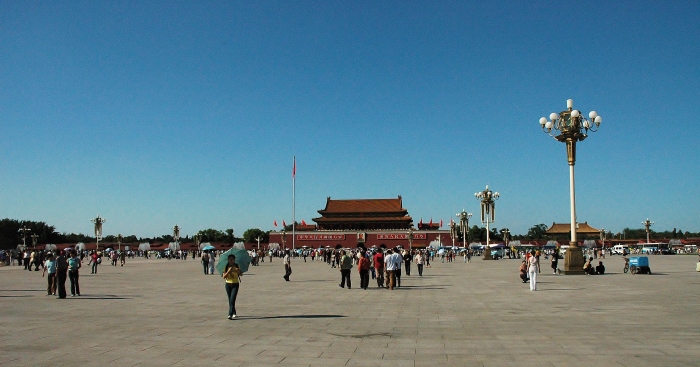
Beijing – Tiananmen Square.
On of the main tourist attractions of Beijing is Tiananmen Square. It is the largest square in the world where we can see a large portrait of Mao. Right behind the image of Mao is the entrance to the Forbidden City with a number of old temples. The name Tiananmen translates into a Gate of Heavenly Peace what from the historic point of view is a total denial of the truth. It was here where Mao Zadong proclaimed the People’s Republic of China in 1949 and over there in 1989 the communist regime massacred 2500 students for demanding political reforms. At that time, students were the only democratic force in communist China what the authorities could not afford. Then soldiers arrived with tanks and opened fire from machine guns to the manifesting, defenseless people and later many were sentenced to death. Tiananmen Square cover an area of 800m by 300m and among many things there is a monument to the People’s Heroes and the Mausoleum of Mao Zedong. In the evening there are many desperate street vendors who try to sell souvenirs for pennies. They sell cards, kites, toys and many other such things, although the most popular ones are watches with a photo of Mao pointing time with hands and the Mao’s small red booklet in which he criticized capitalism. Vendors throw themselves on customers, they praise their things and they reduce prices even by 90% of the initial price. Especially at the sight of a White man from the broken west they smile widely. Apart from that, beside the square there are many monuments depicting powerful communist workers. I advise tourists to spend more time over there because encounters with people can enrich with interesting experiences. There is also a night bazaar nearby.There were a lot exhibits in the National Museum but to me the most the most interesting were the wax figures. There was of course Mao but there was was also Deng Xiaoping (the one who gave the green light to massacre students in Tiananmen Square in 1989), Zhou Enlai (the Prime Minister of the Communist Party at the time of Mao), Confucius, Lenin, Einstein, Jackie Chan and Yao Ming (the famous Chinese basketball player). Another important place was also the Chairman Mao Memorial Hall. Mao Zedong had huge impact on China and many still show a deep respect for the leader and the father of the nation, even though the official figures in China say that he was 70% right and 30% wrong. Apparently the 80 mln killed, disease, famine, internal conflicts, hermetic closure of the country, killing the Chinese aristocracy and the scale of birth beyond women’s strength are all included in that 30%. Apart from that he was “wonderful”. In any case, after the death of the great leader he couldn’t be simply buried, especially that Vietnam conserved the body of Ho Chi Minh and China could not be worse. The problem is that the mausoleum is open only during limited hours and the queue is as long as from Poland to China.
The Forbidden City is the largest collection of palaces in the world and the must see for every tourist. It was being built from 1406 to 1420, that is from the Ming Dynasty to the end of the Qing Dynasty. For almost five centuries this beautiful city within Beijing served as the home of the emperor and the ceremonial and political centre of the Chinese government. The town contains 980 buildings and it is situated in the area of 720,000 m2 and it was built in the traditional Chinese style. The Forbidden City was also a huge inspiration for architecture around East Asia and in other parts of the continent and today it ranks among the world’s cultural heritage. There are many interesting buildings, sculptures and other pieces of art which remain after the old dynasties. That extraordinary architectural phenomenon is surrounded by a thick wall and a moat. The walls are decorated with towers and multi storey roofs covered with yellow tiles. I entered the forbidden city through the famous square by the Gate of Heavenly Peace (Tiananmen), on one of the five marble bridges. I think the Forbidden City is one of the places to which a traveller can return many times and never get bored. Another important place was the Temple of Heaven which is the most remarkable example of architecture left by the Ming Dynasty. The Temple of Heaven fulfills a very important role because it was there where the emperor paid respect to the sky to confirm his authority. Today it is one of the most visited buildings in Beijing, it covers a vast 267 hectare park and it is a popular meeting place. The gardens are very well maintained, it is clean, there is a small gallery of images and people play chess, cards and a dart with feathers. The symbolism of that temple is very important because when viewed from above it has a round top with a square base. This symbolizes the ancient Chinese belief that heaven is round and the earth is square and the whole complex was built by the strict philosophic rules.
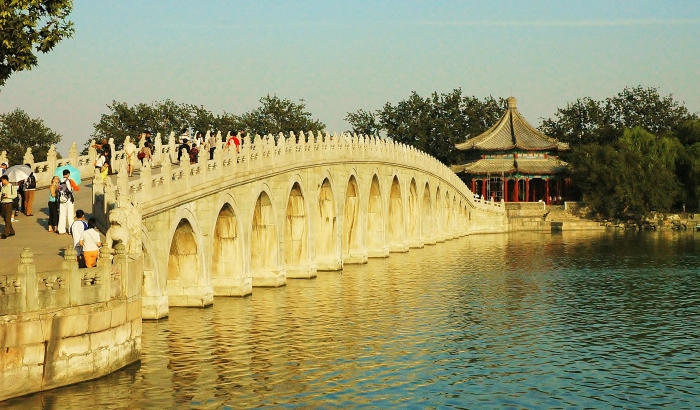
The bridge and pagoda in the Summer Palace in the suburbs of Beijing.
On the outskirts of Beijing lies the Summer Palace, also called the Hall of Preserving Harmony Yineyuan. It was the summer residence of the emperor while in the Forbidden City he used to spend winters. I have to admit that all the objects that I saw really impressed me, even though I had already been to many Asian countries. The summer Palace is a great example of merging the architecture of that time with numerous parks and gardens and it is located on the Longevity Hill on Lake Kunming. The whole complex of gardens and parks covers 290 acres and it includes around 100 different buildings and temples. For centuries that picturesque landscape was improved and enlarged and more and more new buildings were added. The oldest of them dates from the twelfth century, from the Jin dynasty. Many temples in the Summer Palace were built on a hill and that’s why to many of them it wad hard to get to. Along with the change of the altitude of sightseeing I admired the colossal temples and buildings made of many floors and glittering with different colours, what looked even more attractive against the background of streams, sculptures of dragons, big trees modeled on bonsai, carved bridges and many impressions of Buddha.
About 60 to more than 100km from Beijing is the famous Great Wall of China. The huge construction which does not need to be advertised draws millions of tourists from all over the world (including Poland). The construction of the wall began about 2000 years ago when China was united under the rule of Emperor Qin Shi Huang and the main purpose of the Wall was to defend China against the Mongol hordes from the north. To build the wall thee needed hundreds of thousands of workers, many of whom were political prisoners and the legend says that the material was not only stones and earth but also the remains of people working there. No matter how much time the completion took and how many people died while building the wall it was a phenomenal project. Great Wall also served as a good transport line because people and goods could quickly move through that difficult, mountainous terrain. The towers also played an important role because on top of them soldiers were starting fires to warn the troops in other parts of the wall of an attack on China. Mao Zedong said that “the one who has not conquered the Great Wall of China is not a true man” and Genghis Khan said that “the strength of the wall is not in the wall itself but in the courage of those who defend it”. As we know from history the Mongol Empire conquered China and established its own dynasty on the throne in Beijing.
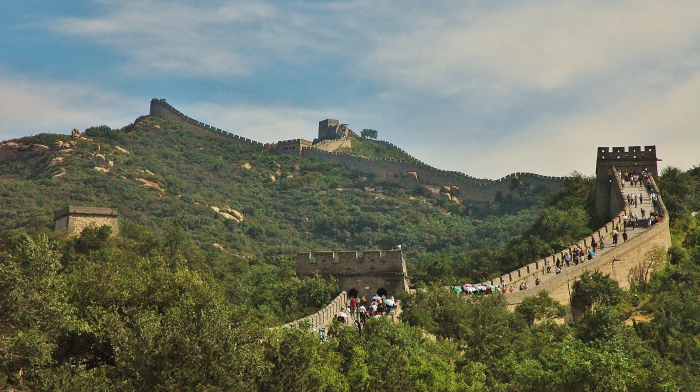
The Great Wall of China.
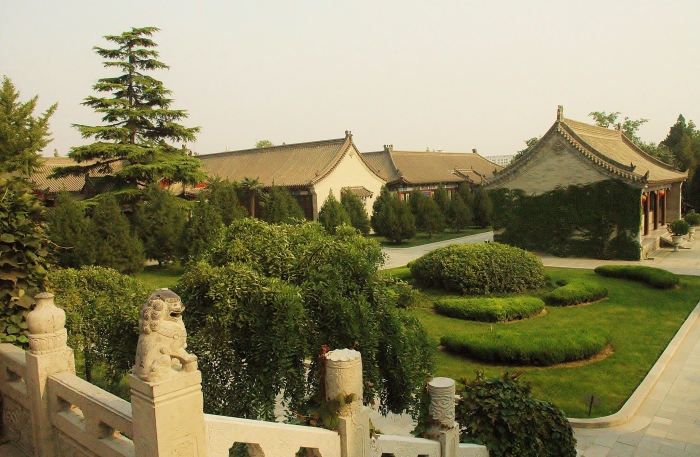
Pagoda in Xi’An, China.
More will come at some point…
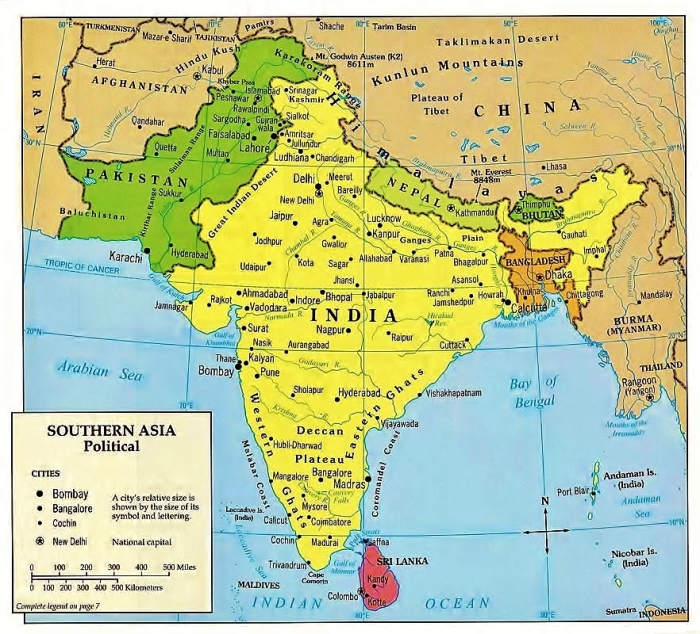
The map of South Asia.
————— ♦ —————
Important facts from this expedition
Nepal – dethronement of the king
Shortly after I left Nepal King Gyanendra was dethroned and all his palaces and all his assets are now owned by the State and are administered by the government. For hundreds of years Nepalese kings were regarded as the incarnation of God Vishnu but because of his despotic rule king Gyanendra clearly lost his divinity in the eyes of his people and is now an ordinary civilian. If he had abdicated the year before he could have saved the throne for his grandson and now Nepal will not have a king at all.
In my opinion it was a huge mistake because the king could have been kept purely for representative reasons and now Nepal will cease to be “the Kingdom of Nepal” and will be ruled by hungry for power hyenas under teh banner “Federal Democratic Republic of Nepal”. The Nepalese society expects a miracle but I think that the economic situation will not improve even by as much as one rupee per every family. Revolutions in countries like Nepal are quite common and they are always very passionate but future disappointments are bigger than Mount Everest. In a country of great poverty where 40% cannot even read or write it will be always easy to find people ready to paint their faces in red and manifest something what they simply do not understand. Nepal repeated the history of Russia from 1917 – the communist pigs overthrew the monarchy and now the people will continue to be poor and in addition to that they will also loose a part of their national identity.

Nepal – people at a bazaar in Kathmandu.
During the civil war in Nepal which took place from 1996 to 2006 19,000 people were killed and about 150,000 were displaced. Nepal is one of the world’s poorest countries outside Africa, even though it has a strategic location, perfect conditions for tourism and a relatively small population, what means that Nepal should become the Switzerland of Himalayas. During the civil war Nepal was a chessboard of two superpowers – China and India, which officially supported the government of Nepal and the King but under the table they supported the Maoists. King Gyanendra was too selfish to worry about his country but after he was overthrown Nepal fell into even a greater economic problems and people became even poorer. Currently, the economy and the infrastructure of Nepal are being built by China and India which compete with each other but of course they do it for a price. Besides, everyone who has even a basic understanding of politics definitely predicted that Nepal would one day follow the red path. India officially recognized itself as a socialist country and China gladly “helped” its brotherly organization on the other side of the Himalayas.
(It is worth recalling that the British Empire left the Indian Subcontinent in 1947 and therefore in the XXI century poverty in Nepal is no longer the fault of the British. At that time South Korea was at the same economic level as India, Japan was destroyed by atomic bombs and Europe was destroyed because of the Jewish conspiracy. However, each of those countries and regions became an economic tiger and the Third World is the Third World until today only because of its own stupidity and inefficiency).
- Bangladesh
- China
- East Asia
- Far East
- Friendship Highway
- Goa
- Gobi desert
- Great Wall of China
- Himalayas
- Hong Kong
- India
- Indian poverty
- Indian subcontinent
- Kerala backwaters
- Korea plastic surgery
- Leshan Buddha
- Lhasa
- Macau
- Mao Zedong
- Mongolia
- Nepal
- Pakistan
- panda reserve
- rice paddies
- Seoul
- Shaolin temple
- South Asia
- South Korea
- Srimangal
- Tibet
- trip to China
- Varanasi burning corpses



